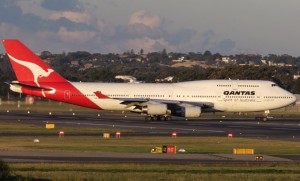
The uncontained failure of a Qantas 747’s RB211 engine near San Francisco in 2010 was caused by the fracture of an ageing engine turbine blade, the ATSB has confirmed.
Engine manufacturer Rolls-Royce has already concluded that a fatigue fracture of a single stage-2 low pressure turbine blade inside the RB211 was to blame for the failure and has issued service bulletins instructing operators to install more robust turbine bearings.
“We have identified the issue and have taken proactive action to address it,” a Rolls-Royce spokesperson said in a statement released today. “We are committed to supporting our customers’ operations and to continually improving the reliability and performance of our products.”
Rolls-Royce said the RB211 engine has logged more than 160 million flight hours since its introduction in 1972 and has been used by 76 airlines.
The August 30 2010 engine failure occurred about 15 minutes after a Qantas Boeing 747-400, VH-OJP, departed San Francisco en route to Sydney with 213 passengers on board. As the aircraft climbed past 25,000ft, “severe vibrations were felt throughout the aircraft” with cockpit instruments indicating damage to engine number 4. Cabin crew reported sparks and flames coming from the engine.
The pilots shut down the engine and returned the aircraft safely to San Francisco after jettisoning some 70,000kg of fuel. No one was injured.
According to the ATSB investigation, the fatigue failure of the turbine blade caused it to fly loose, knocking out other turbine blades and rupturing the turbine casing. Flying debris then punctured the engine nacelle and cause slight damage to the wings and flaps.
The engine had last been serviced in May 2009, at which time the turbine blades were inspected, overhauled and refitted to the engine. At that time the blades were estimated to have accumulated about 80,000 hours in service. The turbine roller bearing, with 71,885 hours in service, was also inspected and refitted. Neither part had a specified maximum service life and both had been maintained in accordance with published standards, the ATSB said.










